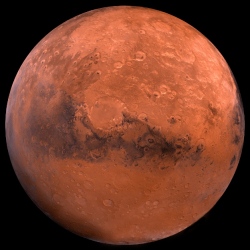
Crewed missions to Mars such may face dangerous levels of cosmic rays, according to a new paper in the journal Space Weather. This is due to a recent highly abnormal and extended lack of solar activity, resulting in extremely low densities and magnetic field strengths in the solar wind.
This results in a serious reduction in the ability of the solar wind’s magnetic fields to block dangerous levels of hazardous cosmic rays, says associate professor Nathan Schwadron of the UNH Institute for the Study of Earth, Oceans, and Space (EOS) and the department of physics.
“The behavior of the sun has recently changed and is now in a state not observed for almost 100 years,” says Schwadron, lead author of the paper and principal investigator for the Cosmic Ray Telescope for the Effects of Radiation (CRaTER) on NASA’s Lunar Reconnaissance Orbiter (LRO)*.
He notes that throughout most of the space age, the sun’s activity has shown a clockwork 11-year solar cycle, with approximately six- to eight-year lulls in activity (solar minimum) followed by two- to three-year periods when the sun is more active. “However, starting in about 2006, we observed the longest solar minimum and weakest solar activity observed in the space age.”
These conditions brought about the highest intensities of galactic cosmic rays seen since the beginning of the space age, which have created worsening radiation hazards that potentially threaten future deep-space astronaut missions.
